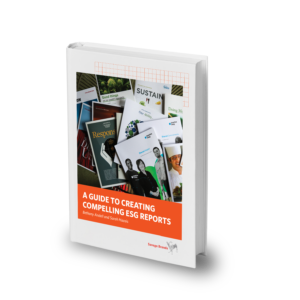Position Your Company, Products and Services to Meet the ESG Demands of Your Customers
Companies are spending a lot of time, money and effort to develop ESG strategies and targets.
Have you thought about how your company can help these customers meet those commitments and achieve their goals? It is likely that your customers are looking to their supply chain for answers. From understanding your own ESG strategy to repositioning existing products to developing new ones with ESG benefits, there is a true opportunity to evolve and grow your business while helping an entire industry and even the world.
Repositioning Existing Products & Services
With the pressure so many companies are under in relation to ESG stewardship and improvement, it is time to look at your products and/or services through an ESG lens and identify opportunities to connect the value proposition to environmental, social or governance-related benefits. Think about whether your products can help reduce emissions, decrease operational or security risk, improve safety metrics, or increase standing within a community. Some products and services already inherently advance ESG goals – they just need a messaging makeover to emphasize a different story that addresses concerns your customers, employees, community, and investors have. It might even be as simple as making secondary messages the primary focus. A focus on ESG product positioning will help you attract customers who are looking for answers.
Innovation through ESG
With the demand for cleaner and healthier products and services, encourage your R&D, product development and commercial teams to be thinking of new ways to solve challenges through an ESG lens. Teams can be thinking of how to reformulate products, improve manufacturing processes, or redesign equipment that helps meet ESG goals (and as a result, help to reduce costs or risk). Encourage employees to think of ways to impact other environmental processes such as extracting, handling, shipping, and/or disposing of raw materials, energy, or water. These shifts – whether small or large – can help substantiate your ESG narrative.
License to Bid
More and more companies are looking at their supply chain and its ability to help them improve and/or meet ESG-related goals. Decades ago, it was a differentiator for energy companies to have a good safety record. Today, a good safety record is a standard customer requirement – a basic license to bid. Though we are in early days, companies that have a clear approach to ESG will be differentiated to their customers. We foresee that ESG-related metrics and improvements will ultimately be required to even make a bid list. Just recently we were asked to describe our commitment to Diversity, Equity & Inclusion, and make the connection to client value. Could you answer that question? Make sure, even if you don’t have ESG-beneficial products, that you understand how ESG is relevant to your company as a whole. Ensure your sales and commercial teams understand why ESG is important and how to describe it through the lens of the customer. Make sure you are ready when procurement integrates ESG-related questions into its bidding process systems. If you’ve not been asked yet, expect to be asked soon.
Photo by Clint Adair on Unsplash
![]() Savage Brands believes in unleashing the good inherent within all organizations. Business results are driven by connecting with people at the belief level. That’s why we align everything a company says and does with its Purpose through a proven process that links strategy and execution with “why.” We solve the challenges corporate America faces by building tribal loyalty from the inside out, focusing on people first to deliver authentic brand experiences. Savage builds purposeful brands, communications, leaders and cultures.
Savage Brands believes in unleashing the good inherent within all organizations. Business results are driven by connecting with people at the belief level. That’s why we align everything a company says and does with its Purpose through a proven process that links strategy and execution with “why.” We solve the challenges corporate America faces by building tribal loyalty from the inside out, focusing on people first to deliver authentic brand experiences. Savage builds purposeful brands, communications, leaders and cultures.
